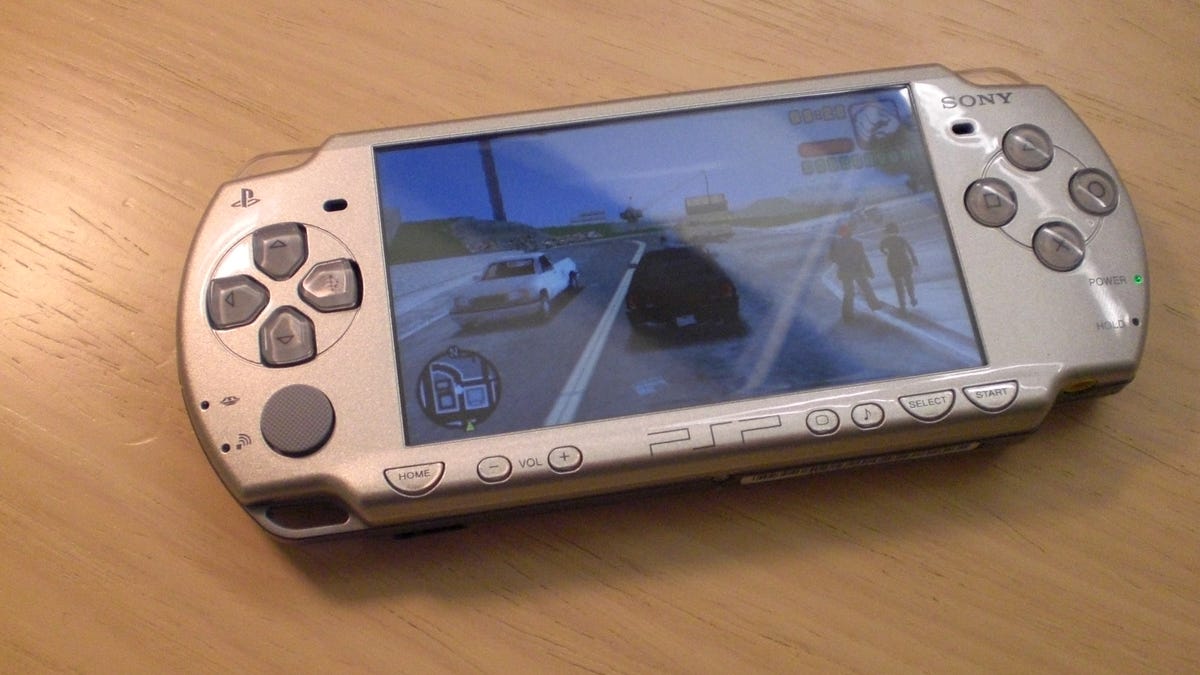Slim PSP, in the flesh
It won't be going on sale until September 10, but CNET's got an early look at the new, slimmed-down PSP.

PHOTOS: Sony's new PSP, in depth
It's not hitting stores until September 10, but Sony is already sending review samples of the new, slimmed-down PSP to various media outlets, CNET included. Not counting the brief walk-through we got four weeks ago, this was our first bit of quality time with the final hardware. A full review is forthcoming; but in the meantime, here are some first impressions of what Sony is calling "the PSP 2000."
- Thinner and lighter: While the 19 percent depth reduction may not look dramatic in the comparative photos, when you actually pick up the PSP and hold it, the fact that the new model is 33 percent lighter than its predecessor is readily apparent. (One co-worker remarked: "It feels like the battery is missing.")
- Slightly improved cosmetics and controls: The thinner profile offers a slightly sleeker, more rounded look and feel. Even better, however, is that all of the control buttons (the d-pad on the left, the PlayStation circle, X, square, and triangle on the right, and the shoulder buttons on the top) all seem to have a bit more spring to them. They feel just a tad more responsive--and that's a good thing.
- Faster loading times: We need to put this one on the clock, but a couple of favorite games--Burnout Dominator and Grand Theft Auto: Liberty City Stories--definitely seemed to boot up faster on the new PSP compared to the old one. But don't expect miracles: the UMD load times are still poky when compared to the lightning-fast, flash-based games of the Nintendo DS and Game Boy.
- Video output: Sony included the component video breakout cable necessary to display the PSP's video on a compatible TV. (Composite and S-Video cables will also be available; each is expected to retail for around $20.) I had no trouble displaying videos on a 46-inch LCD TV, but there are several caveats. The larger the screen, the more unflattering the low-resolution PSP videos will look. Our Memory Stick Duo-based videos (transferred via TiVo To Go) looked chunky and full of artifacts--just as you'd expect a YouTube video to look on a big screen, for instance. UMD video fared much better: Jet Li's The One looked much closer to DVD quality (or at least TV quality). But the biggest frustration was that you can't zoom in on gameplay--games seemed locked in at their native 480x272 resolution. So if your TV doesn't have a robust zoom function, you're stuck with a window-boxed experience.
If those early impressions sound familiar, it's because they're right in line with GameSpot's analysis at the E3 show in July, when the product was first announced. Now, we already knew this was merely an evolutionary upgrade--the PSP2 it's not--but as far as product makeovers go, it's actually pretty cool. Anyone who's been thinking about taking the PSP plunge will be glad they waited for the new unit, while die-hard owners of the current PSP may just well find it to be a worthwhile trade-up as well. The price remains at $170 ($200 for the Daxter and Star Wars Entertainment Packs, each of which include a game and a 1GB Memory Stick Duo card).
If you've got any specific questions about the new PSP, ask them in the comments section, and I'll try to track down an answer for you.

